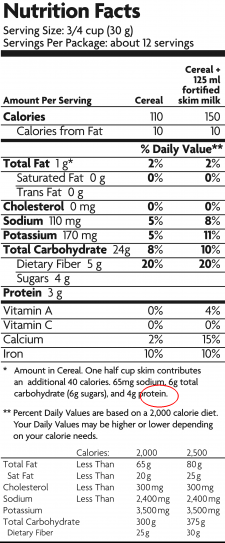How do you read a food label for salt / sodium?

Product labels on many foods show how much sodium (mg/g) or salt (mg/g) they contain. Sodium is not the same as salt. Salt is sodium chloride so sodium is just one part of a molecule of salt. Many labels provide sodium content but not the salt content which can be confusing. If the salt content is not available on a label you can calculate it from the sodium content using the following:
Sodium x 2.5 = salt content or Salt ÷ 2.5 = sodium content
If you have kidney disease a good goal for sodium intake is 2300 mg of sodium or 6g salt per day. Check with your Doctor or Kidney (Renal) Dietitian to confirm what your maximum daily salt (sodium) limit should be.
Nutrition information may be presented in two ways.
Per serving – shows the amount of each nutrient that is contained in a specified serving size. If using this information, check if your portion is larger or smaller, for example a bowl of cereal may be presented as 30g on the nutritional information but your bowl may contain 50g. You would therefore calculate your portion’s nutritional content as follows:
Calories : (110 /30 ) x 50 = 183 calories
Per 100g – shows the amount of each nutrient that is contained in 100g of the food. If a portion contains more than 500mg/0.5g of sodium or 1.25g of salt it is a high salt option.
